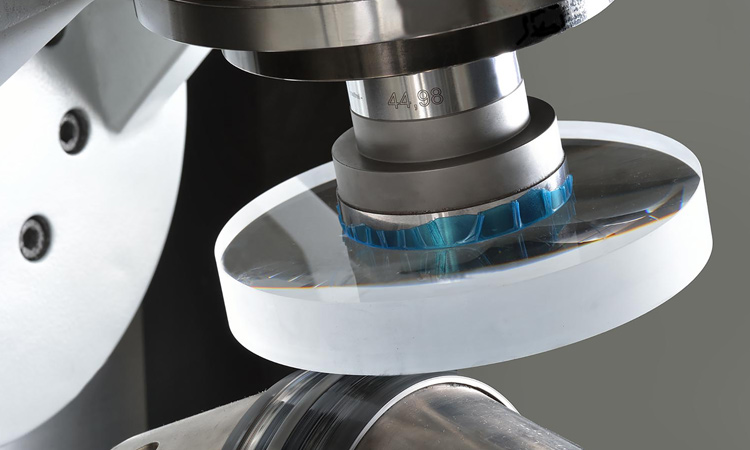Feature
Freeform Optics: Notes from the Revolution
Driven by advances in theory, computational speed, and design and fabrication ingenuity, freeform surfaces continue to make inroads in a range of applications.
 Deterministic polishing of a large-aperture lens using magnetorheological finishing. [QED Technologies]
Deterministic polishing of a large-aperture lens using magnetorheological finishing. [QED Technologies]
Five years ago in these pages (OPN, June 2012, p. 30), Kevin Thompson of Synopsys Inc. and Jannick Rolland of the University of Rochester, N.Y., USA, wrote of a revolution sweeping through optical imaging design: freeform optical surfaces. A combination of theoretical advances, improvements in computational speed, and better capabilities for fabricating asymmetric optical surfaces was, they suggested, spurring new opportunities for compact, high-performance optical designs in a range of applications. And, Thompson and Rolland argued, to take advantage of these revolutionary shapes, “each and every community along the supply chain must learn new concepts and develop new tools.”
…Log in or become a member to view the full text of this article.
This article may be available for purchase via the search at Optica Publishing Group.
Optica Members get the full text of Optics & Photonics News, plus a variety of other member benefits.
